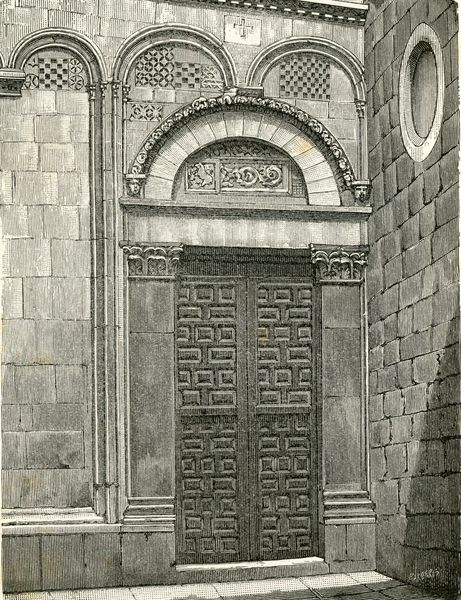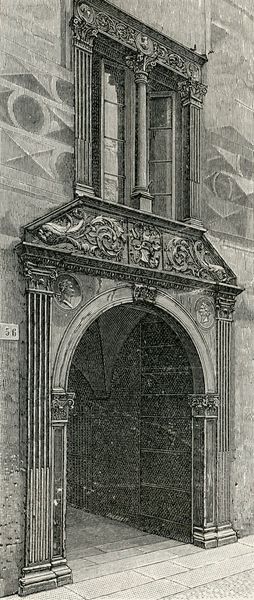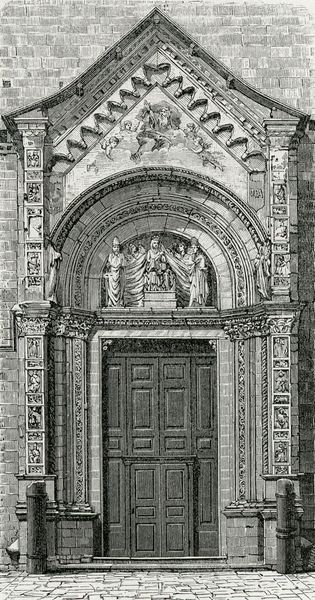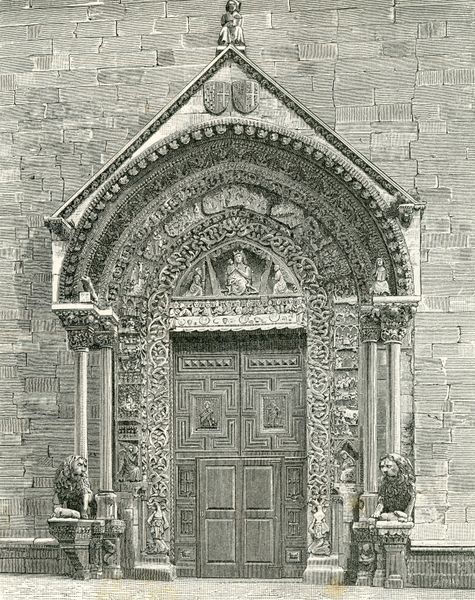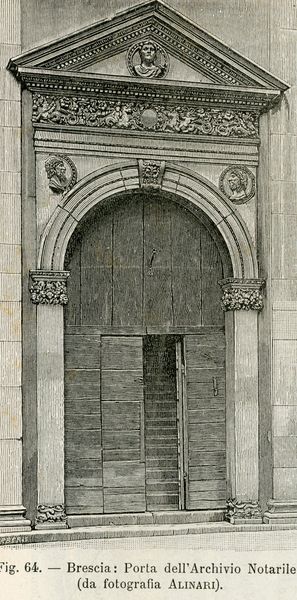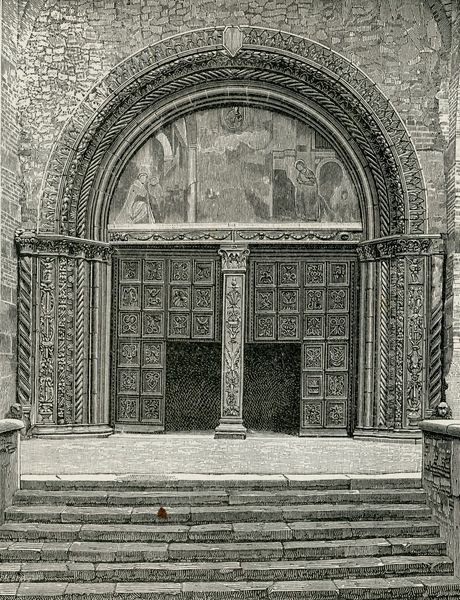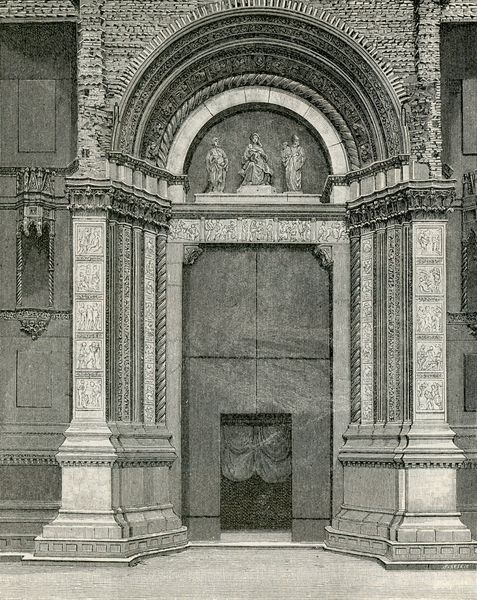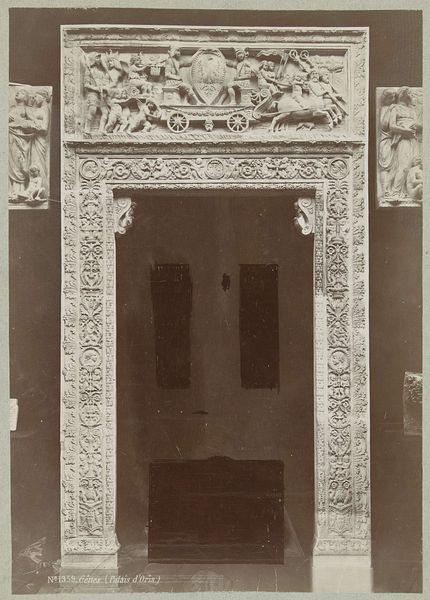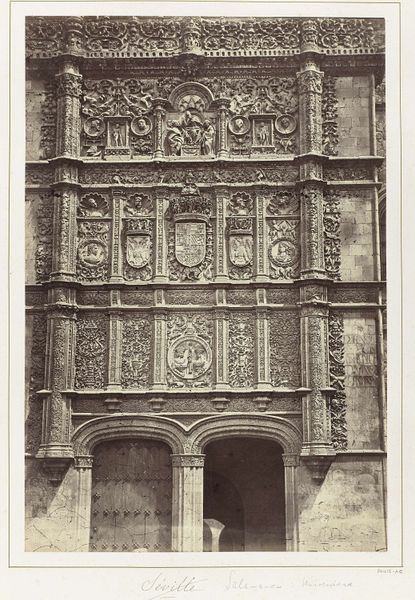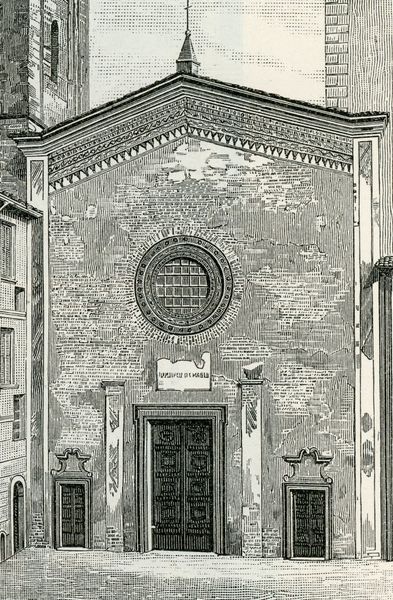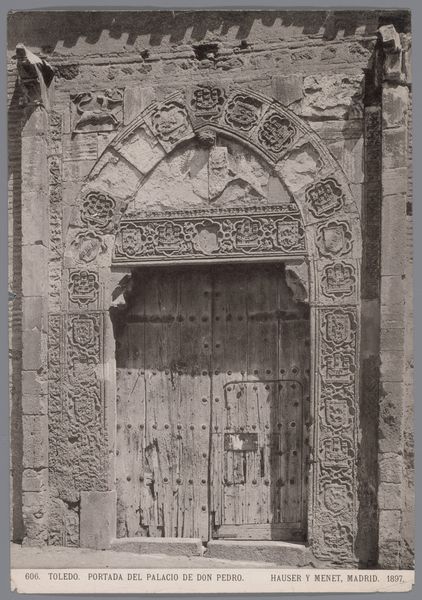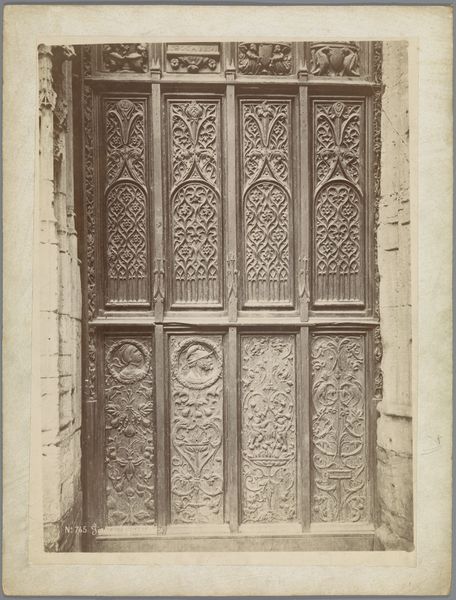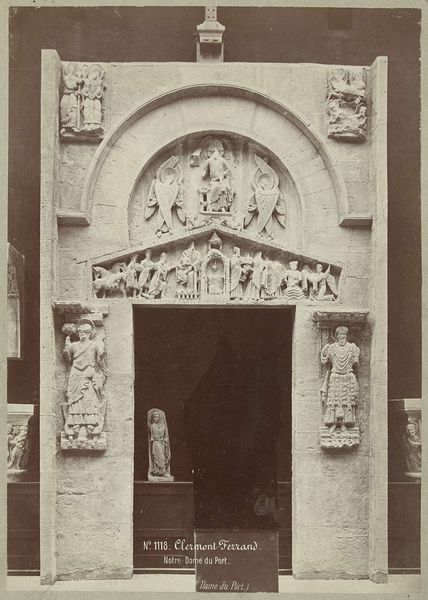
Copyright: Public domain
Editor: This etching from 1897, titled "Porta Della Chiesa Di Sant’antonio" by Giuseppe Barberis, depicts a highly ornamented church door. It's so intricate, almost overwhelming. How do you interpret this work? Curator: For me, this piece serves as a powerful statement about institutional power and access, literally. Consider the architectural style; its Neoclassical elements are deliberate. Why Neoclassicism in the late 19th century? What was it trying to evoke? Editor: I guess a connection to the grandeur of the Roman Empire? Curator: Precisely. Think about who controls access through such a grandiose entrance. This isn't just a door; it’s a symbolic barrier. Barberis is inviting us to think about who is included, who is excluded, and on what terms. The form becomes the function. What effect does the drawing have? Editor: The fine detail really emphasizes the size and apparent weight. And that this institution has resources and longevity. Curator: Yes, and look at the faces sculpted in the pillars! Who are they? Are they idealized representations meant to enforce specific norms and values? Think about whose stories are literally being set in stone, while others are erased. Is there any symbolism that stands out to you? Editor: I didn’t notice that at first. Knowing this it’s all thought-provoking. It changes the way I see this image, it is now loaded with a context that was not apparent at first. Curator: I'm glad! I believe Barberis challenges us to ask these questions and understand that even seemingly straightforward architectural depictions are entrenched in historical and political realities.
Comments
No comments
Be the first to comment and join the conversation on the ultimate creative platform.

